Since we last left off, Kumamoto Castle was still in the midst of the long process of post-earthquake recovery. Meticulous work proceeds on the stabilization and reconstruction of the damaged stone walls. While certain areas within the castle grounds have reopened to the public, the path to fully restoring the castle's former grandeur remains a long-term undertaking, with overall completion currently projected for 2052.
This update details the status of several key restoration projects underway.
Uto Yagura Turret
As the oldest surviving original turret at Kumamoto Castle, the Uto Yagura is a structure of significant historical importance. Positioned atop one of the castle's highest stone walls, both the turret's timber framework and its supporting base suffered extensive damage during the earthquakes. This necessitated a complete, careful disassembly of the structure before repairs could commence. This intricate dismantling process began in 2022 and is scheduled for completion by January 2026. Subsequent repairs and reassembly are projected to conclude by 2032.
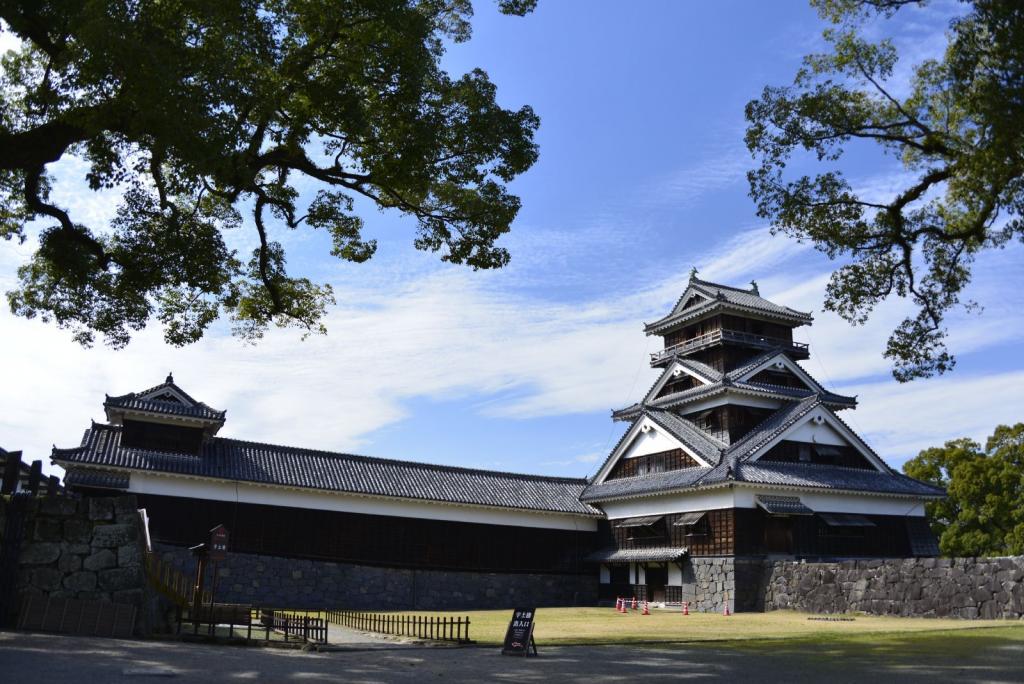
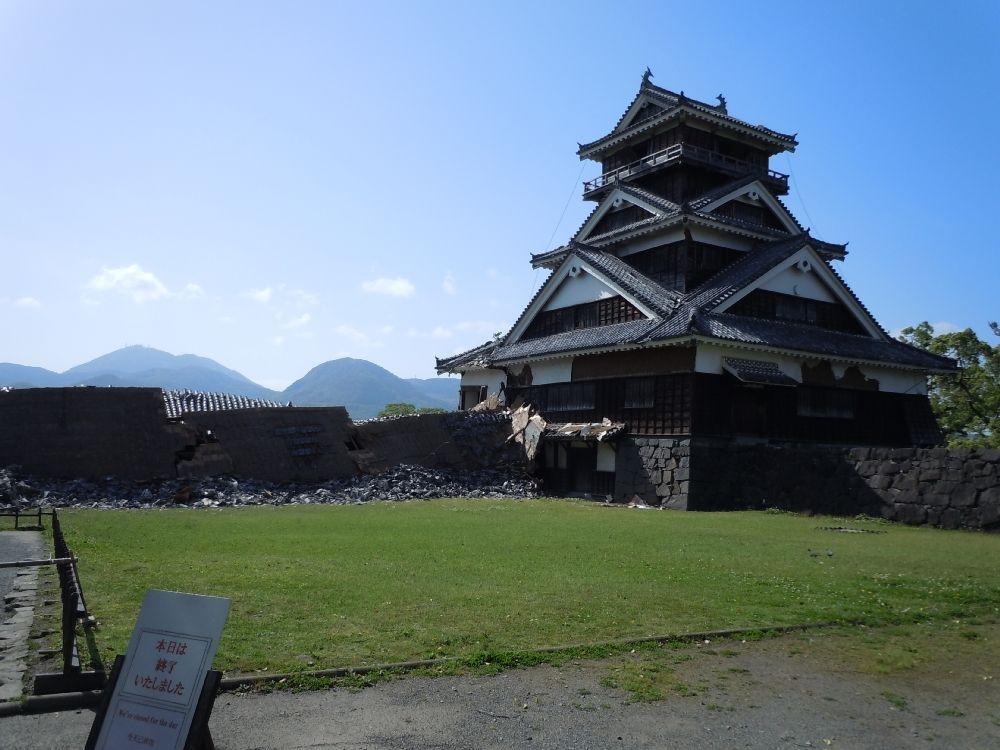
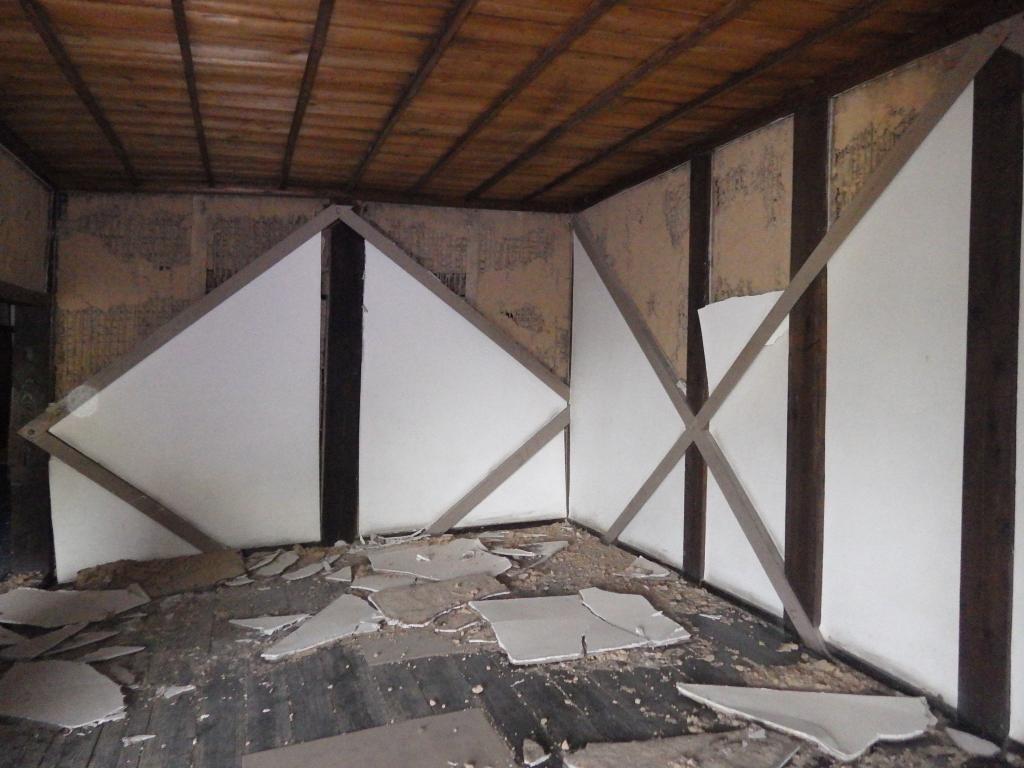
The lengthy timeline reflects the requirements associated with its designation as an Important Cultural Property. Restoration mandates the reuse of original materials wherever feasible. This involves individually numbering each timber component removed and assessing its condition for potential replacement or repair. The technicians also need to tap on each of the over 29,000 roof tiles to test for cracks.
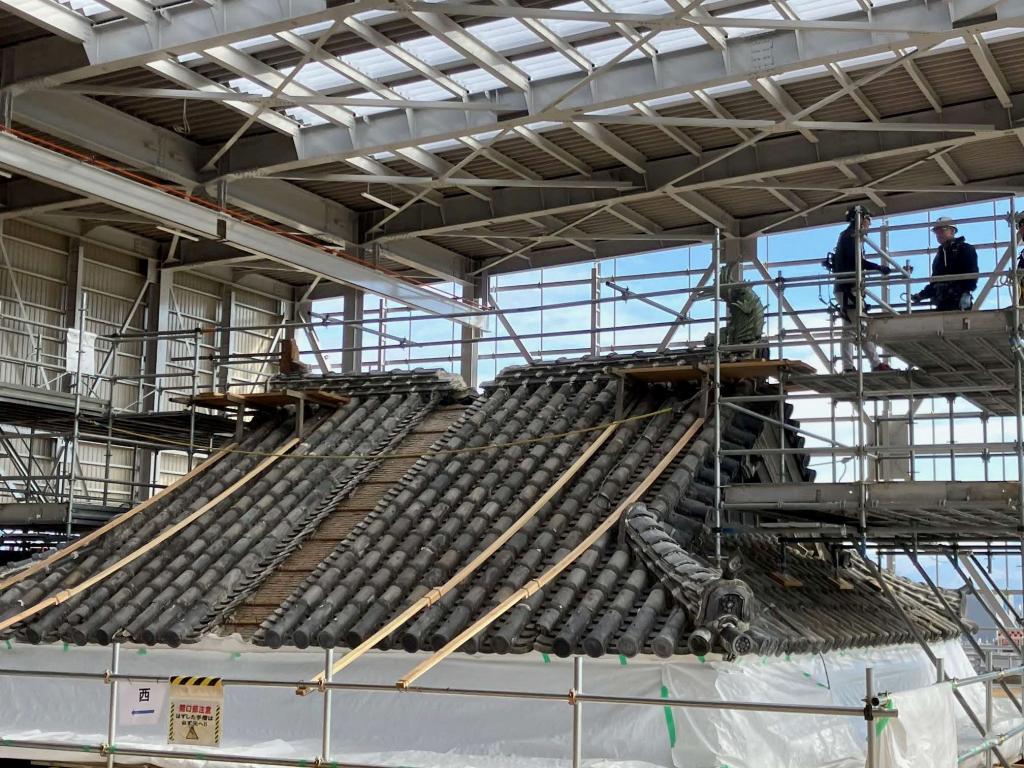
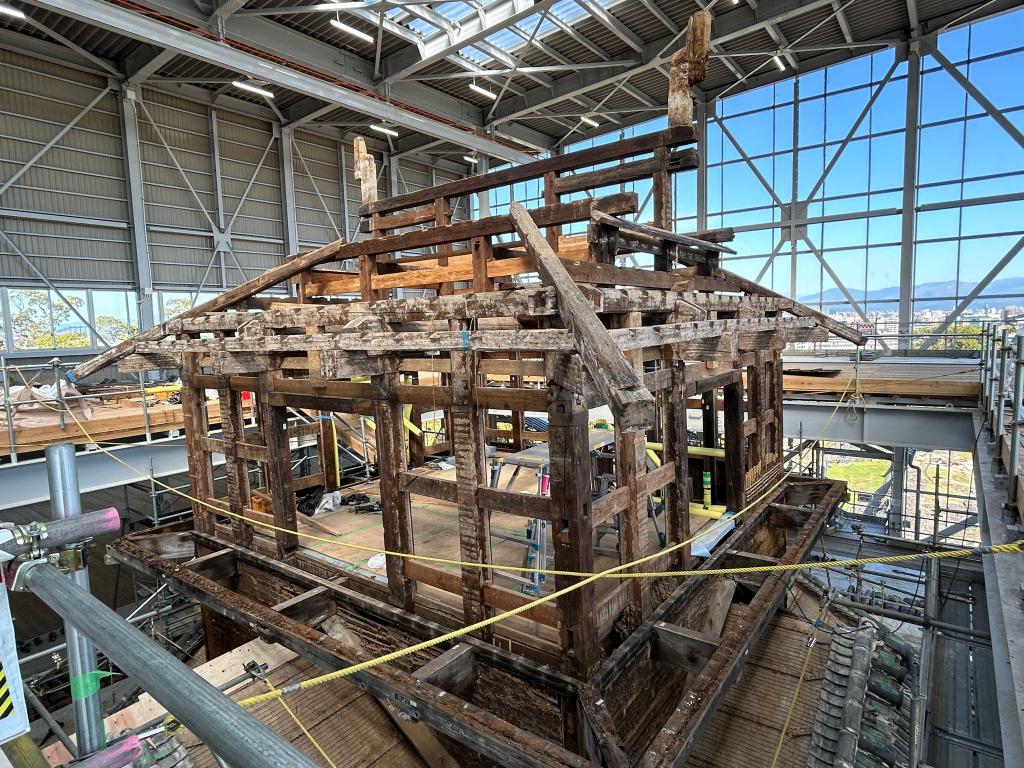
Surveys conducted on the foundation wall beneath Uto Yagura yielded a significant finding: the massive, 21-meter visible portion of the wall extends an additional four meters below ground level, establishing its total structural height at an impressive 25 meters.
Tago Yagura Turret Complex
The Tago Yagura, along with three interconnected turrets visible from the elevated Special Observation Path, is currently undergoing disassembly and repair. The restoration strategy involves completely dismantling approximately half of the structure, while the foundational framework of the remaining half will be preserved during wall and roof repairs.
Visitors on the observation path may notice large tarpaulin coverings; beneath these lie earthen material destined for the turret walls. This traditional mixture of mud and straw is left to ferment for a full year, a process that enhances its strength and viscosity for construction.
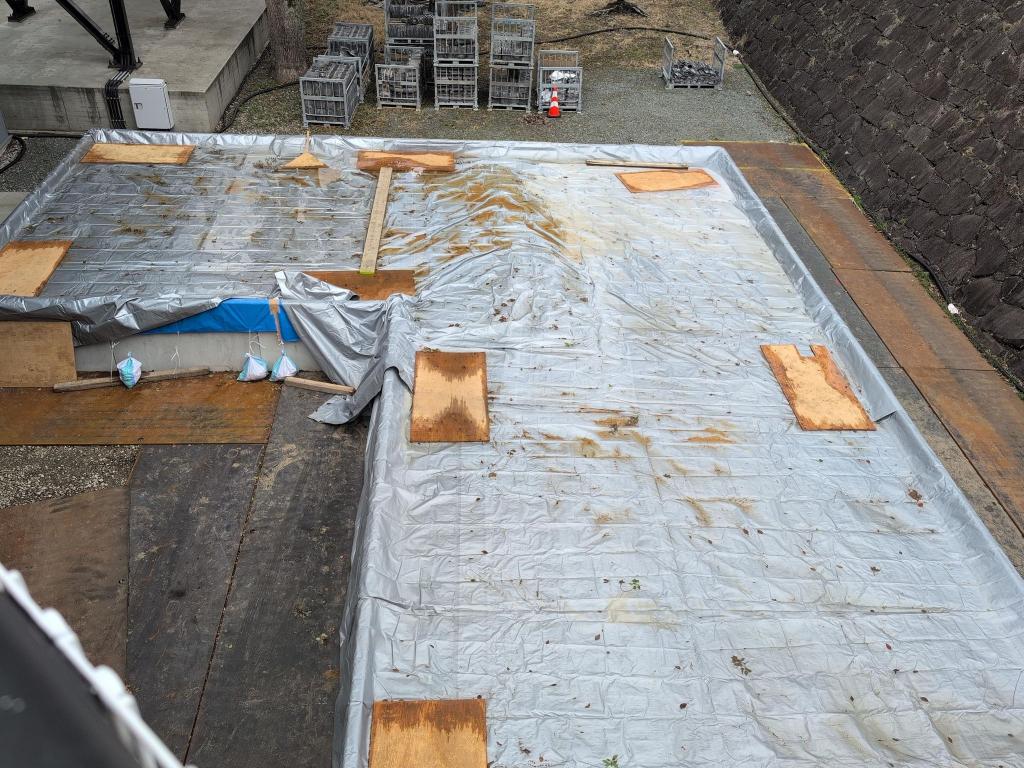
Honmaru Goten Palace
Opened in 2008, Honmaru Goten was only open for about eight years before it suffered significant damage in the Kumamoto Earthquakes. Critical damage occurred to the stone walls forming the building's foundation, requiring the partial dismantling of the palace itself to facilitate foundational repairs. Major reconstruction work on the palace is scheduled to commence in earnest in 2027, with completion anticipated by 2032.
Former Residence of Hosokawa Gyobu
This historical estate located within the castle grounds has remained closed to the public since the earthquakes. Formal repair work officially commenced in 2024 and is projected to be completed in 2027.
Special Events
Kumamoto Castle administration is actively exploring the site's potential as a distinctive venue for special events. The Special Observation Path, in particular, is planned as a stage for various unique programs. One recent event involved filling the area under the pathway with mist, making the castle appear like it was floating among the clouds. The event was popular enough that they may do it again the near future. Check out the castle’s event page for info on future events.
Supporting the Reconstruction: Donations
The monumental task of restoring Kumamoto Castle relies heavily on contributions from supporters worldwide. The castle facilitates this through a dedicated donation program known as Fukko Joshu (Castle Reconstruction Ownership). A minimum donation of ¥10,000 grants participants the title of Fukko Joshu and a commemorative certificate, which provides benefits such as discounts at participating local shops and restaurants. Donor names are also displayed on a digital signboard within the castle keep (please note a processing time of approximately three months is required for name registration). Donations for the Fukko Joshu program must be made in cash at the designated counter near the Ninomaru Parking Area/Ticket Office.


